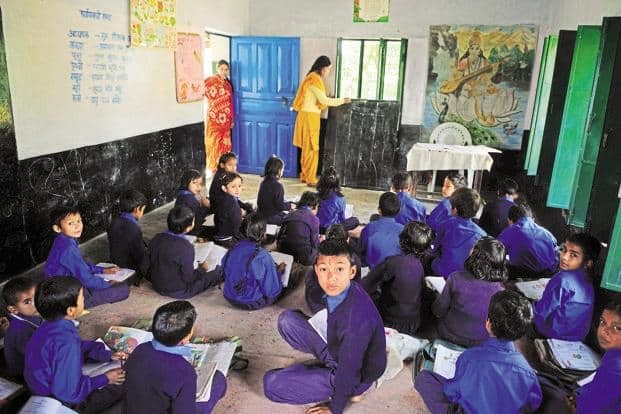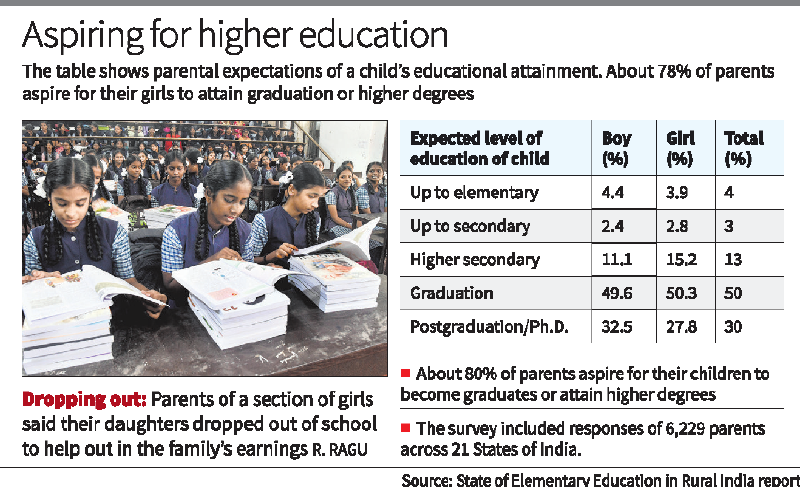STATE OF ELEMENTARY EDUCATION IN RURAL INDIA REPORT

Disclaimer: Copyright infringement not intended.
Context
- The State of Elementary Education in Rural India report, was released by Union Education Minister.
Details
- The Report is based on a survey conducted by the Development Intelligence Unit (DIU), a collaboration between Transform Rural India and Sambodhi Research and Communications.

Findings of the Report
Access to gadgets
- The survey revealed that 3% of students in rural India have access to smartphones. However, among parents whose children have access to gadgets, 76.7% said the latter primarily used mobile phones to play video games.
- Of the students with access to gadgets, 6% used the devices for downloading and watching movies, while 47.3% used them to download and listen to music, the survey said. Only 34% use the gadgets for downloading study material, and 18% accessed online learning through tutorials.
- Of the 6,229 parents surveyed, 6,135 had school-going children, 56 had children who dropped out of school, and 38 had children who had never enrolled in school.
- At least 78% of the parents of girls and 82% of the parents of boys wanted to educate their children to the level of graduation or above.
- Students in Class 8 and above had more access to smartphones (58.32%), while students in Classes 1 to 3 also had access (42.1%).
- Questions on the learning environment at home revealed that 40% of the parents said that age-appropriate reading materials, other than textbooks, are available at home.
Parent participation
- The survey showed that only 40% of parents have conversations with their children around learning in school every day, while 32% have such conversations with their children a few days a week.
- The survey also sought to know the reasons for children dropping out of school from a subset of 56 respondents.
- As much as 36.8% of the parents of girls who had dropped out said it was because they were needed to help out with the family’s earnings.
- Additionally, 6% of parents mentioned their child’s lack of interest in studies, while 21.1% believed that their daughters had to take care of household chores and siblings.
- For boys, as per the survey, the key reason for dropping out from school was the child’s lack of interest in studies.
- As much as 71.8% of respondents cited this reason, while another 48.7% said the boys were required to help out in the earnings for the family.
- On parent participation, the survey revealed that 84% of parents stated that they regularly attend parent-teacher meetings at school.
- The top two reasons for parents not attending meetings were short notice and a lack of willingness.
Note: Use the Findings of the Report while writing answers for UPSC Mains.
|
PRACTICE QUESTION Q. Almost a decade after the Right of Children to Free and Compulsory Education Act, 2009 was passed, it becomes pertinent to review and analyze the levels of implementation of the RTE Act, 2009, and the constraints in its effective implementation. What are the challenges being faced by the rural areas with regard to the primary education of the rural children? Explain. READ THIS ARTICLE BY EPW: https://www.epw.in/engage/article/whats-ailing-primary-education-rural-india-telangana-case-study |




1.png)
